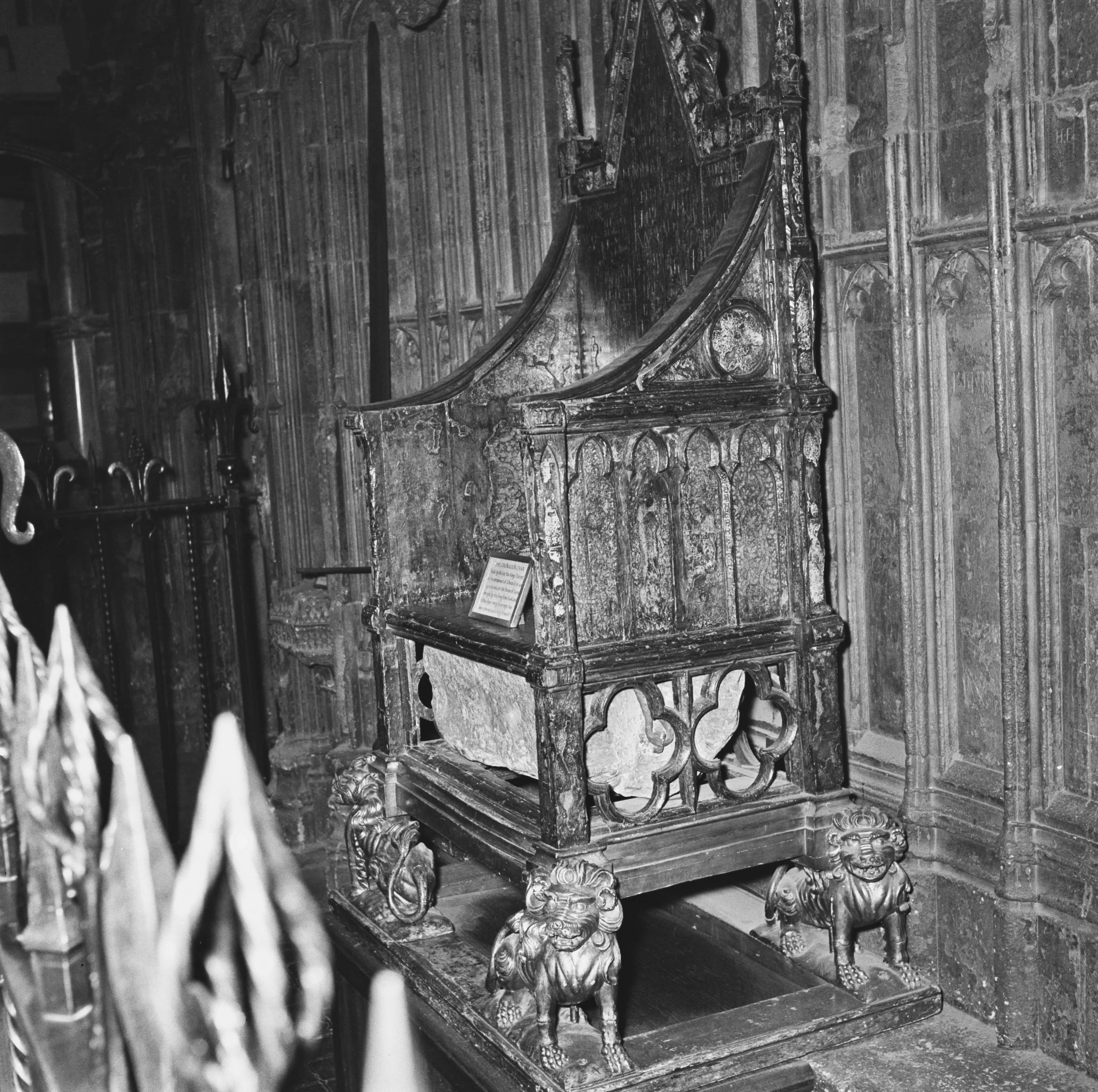What is the Stone of Destiny? Historic 335lb monolith to be moved to London for Charles's coronation

LONDON, ENGLAND: The historic Stone of Scone, also known as the Stone of Destiny, will reportedly be moved from Edinburgh Castle for the coronation of King Charles III. The stone is an integral part of the ceremony and serves as a symbol of monarchy across the Scottish border.
The coarse-grained, pinkish buff sandstone weighing 24 stone (335lbs) is currently situated in the Crown Room of the castle and will be transported by a team of experts once the date of the Coronation is confirmed. Historic Environment Scotland (HES), an organization that manages the castle, is expected to arrange for it to be taken to Westminster Abbey for the ceremony.
RELATED ARTICLES
King Charles told Prince Harry that Meghan Markle was 'not welcome' at Balmoral to see dying Queen
"It will be getting moved by Historic Environment Scotland from the castle to the Coronation – just before the Coronation," a spokeswoman for HES told the Daily Mail on Sunday, September 11. "Then it will be brought back to Scotland." Queen Elizabeth II's throne sat above the stone when she was crowned in 1953 at Westminster Abbey.

The monolith was a symbol of Scottish monarchy for centuries before it was seized by English forces led by King Edward I in 1296 and taken to Westminster Abbey. Once there, it was built into his throne to show that Edward -- also known as the 'Hammer of the Scots' -- had conquered Scotland.

There it remained for hundreds of years until it was ‘reclaimed’ by Scottish Nationalists in 1950. On Christmas Day, four Scottish students led a daring raid into Westminster Abbey and brought the stone back to Scotland.
#OTD 1950: The Stone of Scone was discovered missing from Westminster Abbey pic.twitter.com/MKkfR7LXfQ
— BBC Archive (@BBCArchive) December 29, 2017
English detectives worked day in, day out to locate the missing stone. It was eventually found three months later, located at the high altar in the ruins of Arbroath Abbey, in the county of Angus. The monument was then moved back to Westminster Abbey, in time for the coronation of Elizabeth II in 1953, and it remained there until 1996.
#OnThisDay 1952: The Stone of Scone returned to Westminster Abbey. pic.twitter.com/gJtO0XSOBU
— BBC Archive (@BBCArchive) February 29, 2020
That year, the Queen marked the 700th anniversary of the stone’s original removal from Scotland by consenting to return it to Edinburgh Castle on St Andrew’s Day. "With permission, I should like to make a statement about the Stone of Destiny," former Prime Minister John Major in a statement to the House of Commons at the time. "I now wish to inform the House, that on advice of Her Majesty’s ministers, the Queen has agreed that the stone should be returned to Scotland. I believe that on this the 700th anniversary of its removal from Scotland it is appropriate to return it to its historic homeland," he added.
TOP STORIES
King Charles III was proclaimed as the new monarch of the UK on Saturday, September 10, after he signed the Accession Proclamation that marked his claim to the throne. The new sovereign delivered a heartfelt speech on the occasion, remembering his mother Queen Elizabeth II.
A pitch perfect speech by a prince turned king. Charles III honoured his mother; presented the monarchy as safe in his hands, with William’s help; and offered an olive branch to Harry and Meghan:
— Peter Hunt (@_PeterHunt) September 9, 2022
pic.twitter.com/ZUAYqce3CZ
“My mother’s reign was unequaled in its duration, its dedication, and its devotion. Even as we grieve we give thanks for this most faithful life,” the King said, adding, “I am deeply aware of this great inheritance and of the duties and heavy responsibilities of sovereignty which have now passed to me.”










